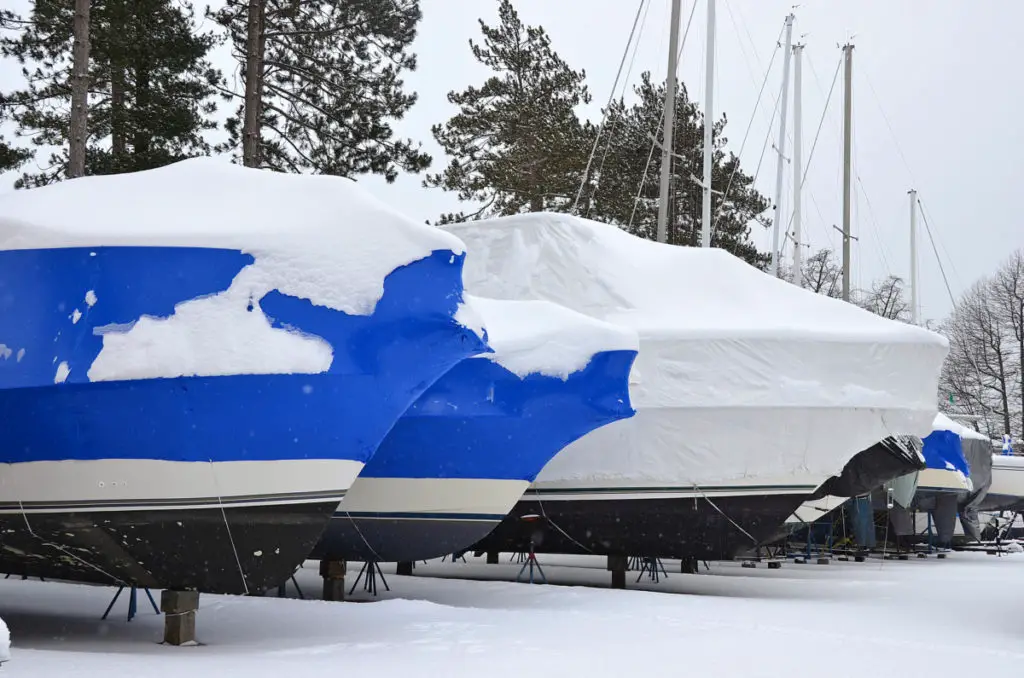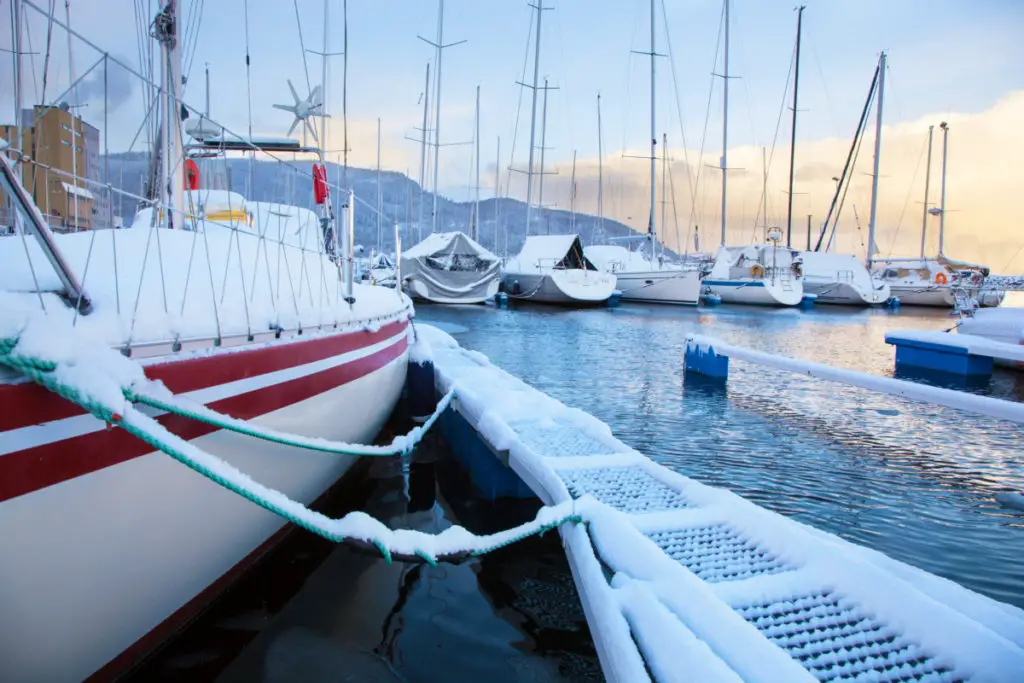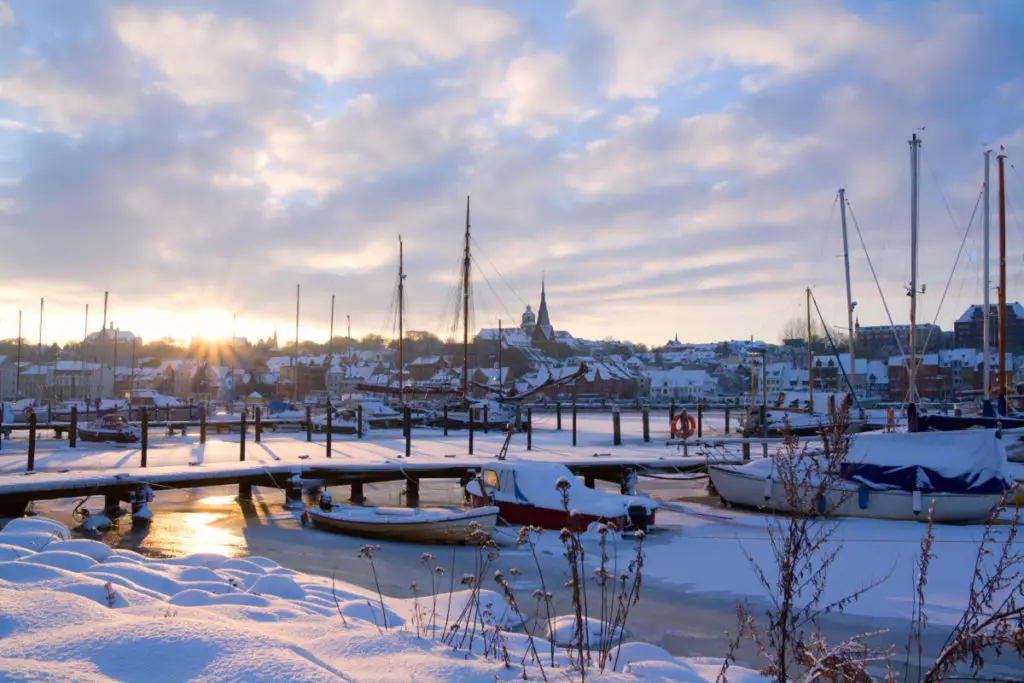As an Amazon Associate, we earn from qualifying purchases. We may also earn commissions if you purchase products from other retailers after clicking on a link from our site.
Once the weather cools down, many people stop using their boats, but colder temperatures don’t mean you can’t sail. Sailing during colder months many times gives you calmer waters and low sunsets. And if you are sailing in Scandinavia where I live the sun will never set, this is very cool. So how can you sail all year long?
To sail year-round you must prepare your boat for colder temperatures, change your gas to propane, insulate your boat, learn how to handle frostbites, and add a heater. It is also wise to avoid storm/hurricane seasons in certain areas, more on that below.
Sailing year-round can be an enjoyable experience for many people, especially if you like to sail without other boats around.
Can You Sail All Year Round?
Some winters are milder than others, so fall and winter sailing can be a real treat depending on where you live.
You can sail all year-round if you insulate your boat, keep it shrink-wrapped when not in use, and pack a de-icer or other winter gear. But if you want to live on your boat all year round, you may want to go further south (or north depending on hemisphere) where it’s warmer.
To preserve the longevity of their boats during winter use, many people will shrink wrap their boats.
Shrink-wrapping a sailboat provides the exterior with an additional layer of protection against the harsher winter elements, and it also keeps the interior of the boat warm. When shrink-wrapping your boat, be sure to create a space for a doorway and door frame.

You’ll need space so you can get in and out of your boat quickly.
You’ll also need to upgrade your insulation when sailing during colder months. Proper insulation helps reduce the boat’s condensation, mold, and mildew growth. Insulating your boat also keeps the interior warm, so cold air doesn’t get in.
In this article, I describe what materials are good for insulating your boat.
If you’re considering living on your sailboat during the winter, then be sure to check your marina to see if they allow year-long liveaboards. Be sure to ask about available electricity, freshwater, shower options, and other amenities that the marina might offer.
If you are planning to stay in Florida then I should suggest you read this article about the 9 best live-aboard marinas in Florida

What Type of Boat Do You Need To Sail Year-Round?
You can sail year-round in many types of boats.
The type of boat you need to sail year-round is one that allows you to live comfortably in it. It can be a cruising sailboat, yacht, catamaran, or houseboat. Keep in mind that if you’re going to live on your sailboat, it needs to be at least 35’-40’ (11-12 m).
Catamarans are great options for sailing year-round because they offer a lot of interior space for their length.
They have twin hulls that help stabilize the boat. As long as you equip your boat with the gear listed below, you should be able to sail year-round on any sailboat.
What Type of Gear Do You Need To Sail Year-Round?
The type of gear you need to sail year-round include thin layers of clothing, gloves, hats, sunglasses, and propane gas. You also need a heater if you’re going to be in a colder area, and a decent deck de-icer to keep your deck from icing up.
Let’s take a closer look at these items and why you need them.
Thin Layers
When sailing during colder temperatures, you’ll want to wear several thin layers instead of oversized, bulky sweaters and coats. Wearing light layers will help maintain your body heat and keep you warm. And you will be able to move quickly should a storm come up and you need to keep your boat afloat.
Gloves, Hats, and Sunglasses
A good pair of gloves is a necessity for sailing year-round. Consider purchasing gloves that are durable and water-resistant.
Some people also enjoy wearing fleece gloves during the winter to keep warm. But remember that fleece is basically useless if it gets wet.
Headwraps, scarves, or hats that you can also wrap around your face are an excellent option for keeping warm. Most of your body heat escapes through your head, so a hat is a good option for a windy day and sailing during the winter.
Sunglasses are a key essential to sailing during any time of the year. You’ll want to protect your eyes from the sunlight that reflects off the water, and the sun is lower during the winter, so sunglasses will help keep you from squinting.
Important sun protection for your skin and eyes is essential regardless of the time of year you’re sailing.
Propane Gas
To sail year-round, you might want to use propane gas during the winter months.
Propane gas has a lower freezing point than butane, which can help you preserve gas during colder months. Changing the gas isn’t tricky, as you’ll just need to replace your boat’s regulator. Don’t forget to bring an extra bottle of gas with you as well.
Heater
If you’re sailing year-round, you’ll want to keep a heater in your boat for when the temperatures start to drop. Buy a heater that works best for you, your boat, and your location, whether you’ll be near a marina or not.
You can use:
- Kerosene
- Battery-operated heater
- Diesel heater
- Oil-filled space heater
You can even use a kitchen stove as a heat source if you’re on a yacht or houseboat.
In this article, I describe the benefits and cons of using different heat sources.
Vacuum/Dry Bag
If you’re going to keep your bedding fresh on your boat, then you’ll need a vacuum bag to store your bedding in during the colder months. A vacuum bag will keep your bedding safe, dry, and free from mildew. And, if you’re sailing during the summer months, it can keep extra blankets safe.
Deck Cleaner and De-Icer
Decks can grow moss, algae, and other fungi during cold weather or if they sit too long. Purchase a high-quality deck cleaner to keep your deck clear and safe. You’ll also need a de-icer for colder days when frost might set in overnight.
Using a deck cleaner and de-icer will keep you from slipping on your deck.

Where Can’t You Sail Due To Hurricanes Or Rough Weather?
You’ll need to research cruising routes in advance before you start to sail ( I suggest this book from Amazon). There are many routes to choose from, and you can purchase routing software that will help you navigate your trip. Most software will alert you of weather conditions and whether or not you need to stay at a port for a few days.
You can’t sail during winter storms, cyclones, and hurricanes. Cyclones generally occur in the South Pacific Ocean near Australia from January to March. And hurricane season in the Caribbean begins in June and ends in November, with the worst months being between August and November.
When sailing near Asia, keep in mind that typhoons are common during the monsoon season from May to October.
You can’t sail in the following areas due to hurricanes or rough weather:
- The Red Sea (pirates)
- Cape of Good Hope (bad weather conditions)
- Gulf of Guinea (pirates)
- Cape Horn (bad weather conditions)
- Straits of Malacca (rugged terrain, debris, pirates)
- Point Conception (unpredictable weather)
Final Thoughts
Sailing year-round is not an impossible task.
Many people enjoy sailing during the off-season because the water is calmer, and you can sail without many other boats around. When the temperatures get cold, you’ll need to take some extra precautions with your boat.
Be sure to keep your supplies fully charged during the winter because they often require more power to start. Don’t forget to install insulation and a heating source so that you’ll stay warm when sailing year round.


